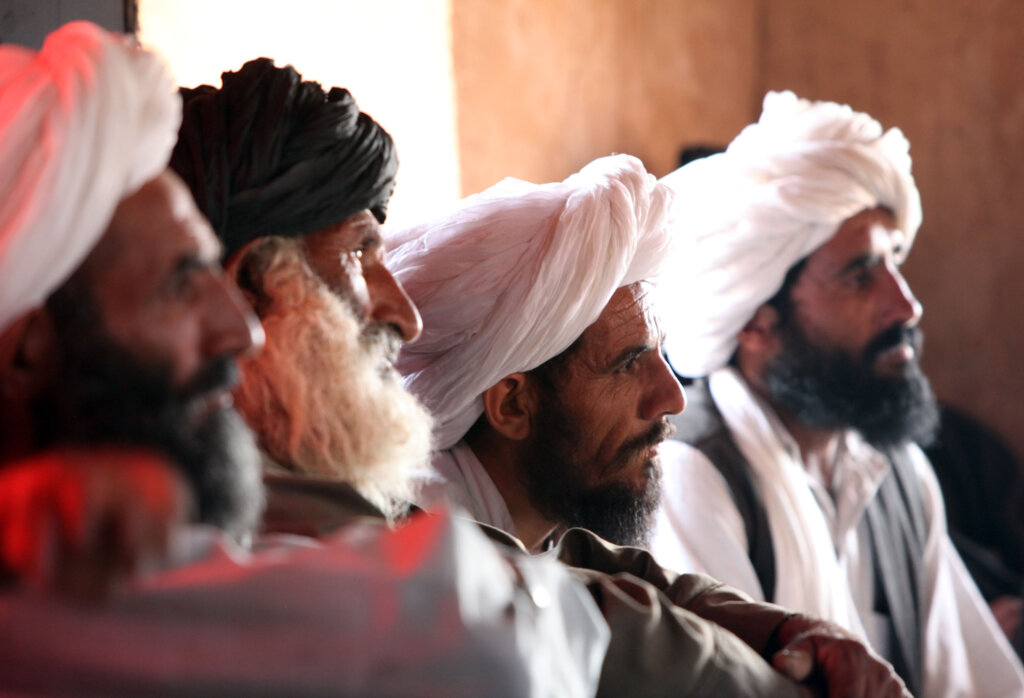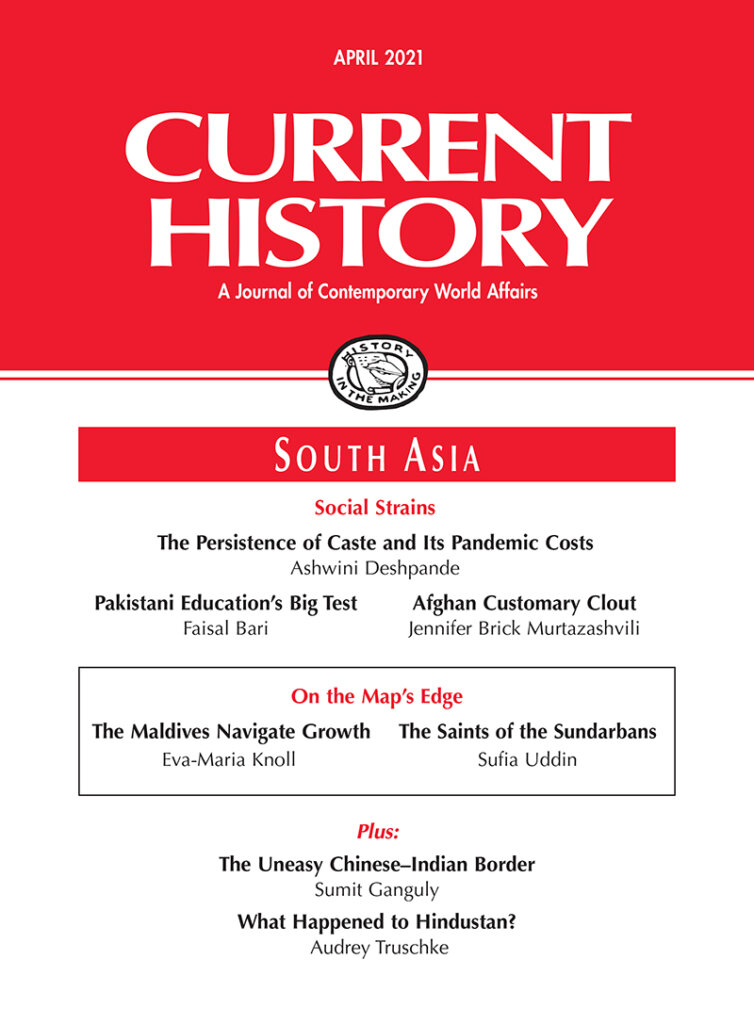
Afghanistan has a rich history of customary or traditional governance structures which have remained central to the lives of most citizens, who rely on these community-based bodies to resolve disputes, provide small-scale public goods and services, and to broker relations with local government. The two-decade effort by the United States and its NATO allies to build a modern liberal state in Afghanistan envisioned electoral democracy replacing village councils and other forms of customary authority. Jennifer Brick Murtazashvili’s essay, “The Endurance and Evolution of Afghan Customary Governance,” which is featured in Current History’s April issue (the journal’s annual South Asia issue), explores the history, persistence, and importance of customary authority to Afghanistan’s future. Murtazashvili is an associate professor of international affairs at the University of Pittsburgh. She fielded the following questions from Current History editor Joshua Lustig via email.
Your article in Current History’s April issue is about customary authority in Afghanistan—you argue that the disappointments of the state-building efforts led by the United States since 2001 can be partly attributed to a failure to recognize the importance of these traditional local leaders and work with them. How did you originally become interested in the study of Afghan society and politics, and what eventually drew you to focus your research on customary authority?
On September 11, 2001, I was working for the US Agency for International Development in Uzbekistan, right to the north of Afghanistan. I also served as a Peace Corps volunteer in a Persian-speaking community in that country. During my time in Uzbekistan, I got to live among customary structures that were similar to those I was reading about in Afghanistan after 9/11. Because of the common languages between Uzbekistan and Afghanistan and common histories and cultures, I was so curious to understand how these customary authorities worked across the border. Although the Soviets put a great deal of pressure on local authorities in Uzbekistan, such authority did withstand decades of communism that sought to wipe it out. I first started travelling to Afghanistan in 2005 and was surprised by narratives coming out of the international community suggesting that customary authority was wiped out during war. If such structures could withstand 70 years of Soviet rule, surely elements of them could withstand a couple of decades of war. I was surprised at the extent to which they endured and evolved. To my mind, the inability of the international community and many in the Afghan government to understand how such authority could complement the state, rather than compete with it, was one of the fatal flaws of the international effort in Afghanistan. The international community assumed a tabula rasa upon which it could create its own vision, rather than a very crowded and creative institutional landscape.

Can you give us a sense of what it’s been like to do fieldwork in rural Afghanistan in the post-2001 era, when it seems that the war has never really stopped? How do you stay safe while at the same time trying to build trust and rapport with people in communities that may not otherwise have much interaction with foreigners? Have you found that customary leaders tend to be open to your presence and your questions, or have some been less welcoming?
During the time I conducted most of my fieldwork discussed in this article, Afghanistan was safer than it is today. The security situation has significantly deteriorated year after year. Despite the security challenges, it was not difficult to build rapport with the people of Afghanistan, especially those outside big cities. Believe it or not, I cannot think of a single family or individual who refused to speak with me as I did research around the country. The most significant challenge was convincing interviewees that I was not an aid worker. There was an assumption that every foreigner cruising the countryside was there for aid work. This really biased the responses I received, because people told me what they thought I wanted to hear to maximize resources, rather than what they really believed. It took me a while to figure out how to change my interview style to adapt to this reality. I did this by asking about family history and history of conflict in the area. I am so grateful for the countless hours so many strangers gave to me over many, many months to share their fears as well as their hopes for the future. While many people have stereotypes of Afghanistan as an insecure place, I hope that people walk away from this piece and understand the incredible creativity and ingenuity of its people.

It seems that Afghanistan has never really regained stability in the two decades since the Taliban regime was overthrown, and now the country is at another turning point, with uncertain prospects for a peace agreement between the Taliban and the government. What kind of future do you see for the country, especially for the rural communities where you’ve done fieldwork? Does the resilience of customary authority give them a degree of stability whatever happens in Kabul, or is the situation precarious in the villages as well as the cities?
It is impossible to say what will happen in Afghanistan, but much of the insurgency is driven by corruption and poor governance coming from Kabul. There is deep alienation among many toward the state and toward many international donors, whom Afghans believe wasted lots of money and fueled corruption. Communities and their evolving governance structures provide an important source of resilience against war and conflict. In contrast to the state, they also operate with a high degree of legitimacy. If Afghan history gives us clues, it will be difficult to sustain stability in Afghanistan without some recognition of the ability of communities to manage their own affairs. Community governance is not a panacea and has many imperfections, but it has proven itself to be an important alternative to the state during difficult times. The challenge is that the state, and even the Taliban, have viewed such local legitimacy as a threat. Let’s hope that a peace agreement will devolve greater authority to the subnational level so that these community voices can have a greater say in managing local affairs. Despite many changes in Afghanistan, it retains one of the most centralized governance systems in the world. While the central government has doubled down on this system, it has alienated so many people and driven them away. A peace agreement that leads to a new government must take this into account in order to achieve peace.
Read “The Endurance and Evolution of Afghan Customary Governance” for free online for a limited time.
This post is part of our blog series for AAS2021 and ISA2021.
